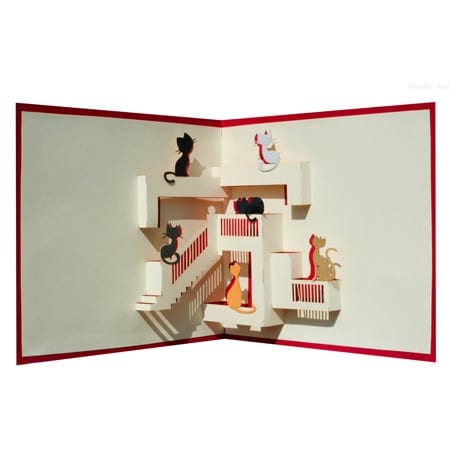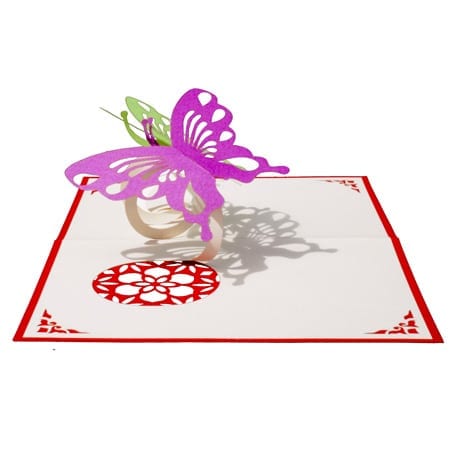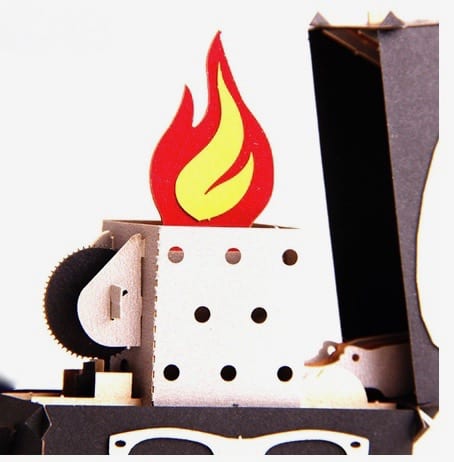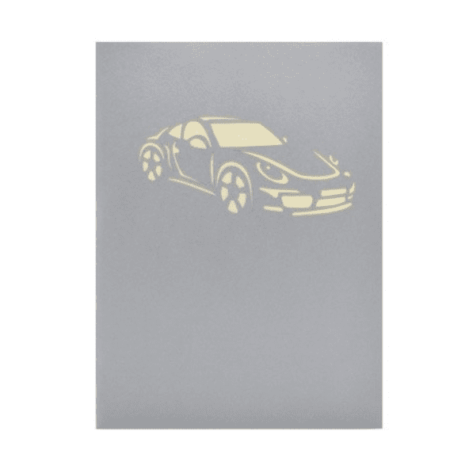Description
Zippo Lighter is made in USA.
The metallic gold cover has a silhouette of a cigarette lighter with the lid flipped open to show a flame. Open the card to a 3D popup of the iconic Zippo Lighter. This lighter is black metal, rectangular, and decorated with drawings of a fedora hat, eyeglasses, mustache and pipe. Flip the lid of the lighter and a red and yellow flame pops out.
This is a nostalgic card for a military man, a vet, an actor, a historian, for a boyfriend, dad, grandfather, man’s birthday, Father’s Day.
Smoking Quotes:
Buy your own effing lighter!
I kissed my first girl and smoked my first cigarette on the same day. I haven’t had time for tobacco since. ~Arturo Toscanini
One thousand Americans stop smoking every day — by dying.
Remember, if you smoke after sex you’re doing it too fast.
If we see you smoking we will assume you are on fire and take appropriate action. ~Douglas Adams
It has always been my rule never to smoke when asleep, and never to refrain when awake. ~Mark Twain
A woman is only a woman, but a good cigar is a smoke. ~Rudyard Kipling
If you must smoke, take your butt outside.
Poetry:
Tobacco is a dirty weed. I like it.
It satisfies no normal need. I like it.
It makes you thin, it makes you lean,
It takes the hair right off your bean
It’s the worst darn stuff I’ve ever seen.
I like it.
~Graham Lee Hemminger
Fact:
In a gathering of two or more people, when a lighted cigarette is placed in an ashtray, the smoke will waft into the face of the non-smoker.
Zippo history:
The Zippo Lighter was born in the early 1930s in Bradford, Pennsylvania. Founder George Blaisdell watched a friend struggle awkwardly to light his cigarette with a cumbersome, Austrian-made lighter. Mr. Blaisdell noted that the lighter worked well even in the wind due to the unique chimney, but the appearance and design was utilitarian and inefficient. The lighter required the use of two hands to operate and its thin metal surface was easily dented.
Mr. Blaisdell decided to reconstruct the Austrian lighter. He fabricated a small rectangular case and attached a lid with a hinge. He preserved the chimney design which protected the flame. The result was an attractive lighter that was easily operated with one hand. The name “Zippo” was created by Mr Blaisdell. He liked the sound of the word “zipper” so he formed variations on the word until he settled on “Zippo,” which he felt had a modern sound.
The new pocket lighter sold for $1.95 each and was backed by Mr. Blaisdell’s, now famous, unconditional lifetime guarantee: “It works or we fix it free.”
World War II had a profound impact on Zippo.
Upon America’s entry into the war in 1941, Zippo ceased production of lighters for consumer markets and dedicated all production to the U.S. military. This led to the production of the steel-case Zippo lighter with black crackle finish. Millions of American military personnel carried the lighter into battle, which established Zippo as an American icon throughout the world. These lighters were engraved with sayings of gallows humor.
Collectors note Zippo’s ties to popular culture, Hollywood, Broadway, and the music industry. The Zippo lighter has been featured in more than 2,000 movies, stage plays and television shows over the years. Zippo lighters have “starred” in such diverse productions as “I Love Lucy” “The X-Men” and “Hairspray.” Often the lighter is a key prop, used as a device to move the plot forward or to reflect the personality of a character or time period being depicted. The famous Zippo “click” sound has been sampled on songs, and the lighters themselves have been featured on album covers, tattooed on rockers’ skin, and wielded in Rolling Stone photo shoots.
In a world where most products are simply disposable or available with limited warranties, the Zippo pocket lighter remains backed by its famous lifetime guarantee. In more than 85 years, no one has ever spent a cent on the mechanical repair of a Zippo pocket lighter regardless of the lighter’s age or condition. The Zippo pocket lighter is ingrained in American culture and is a global icon of durability and reliability.
See Swiss Army Knife.










































